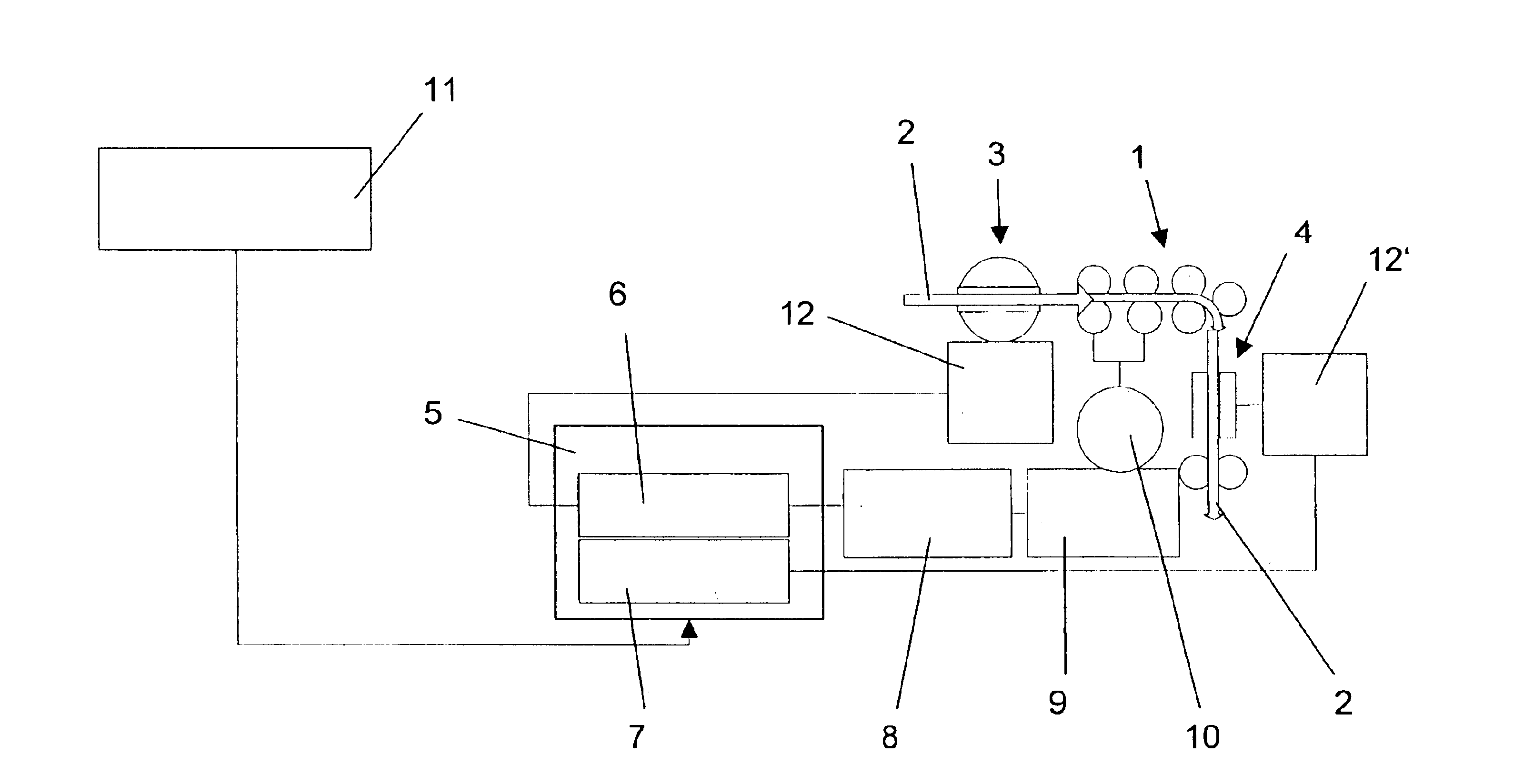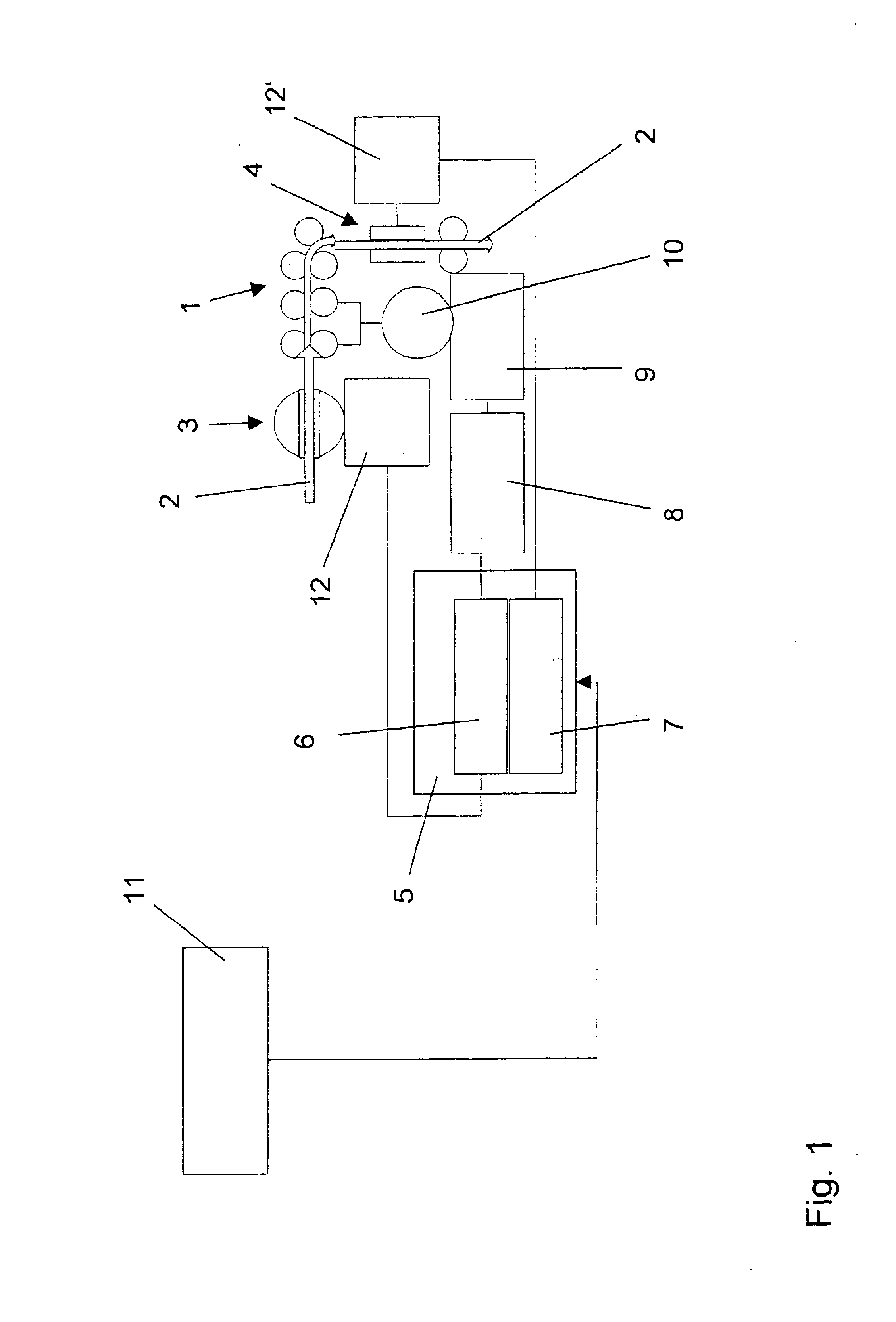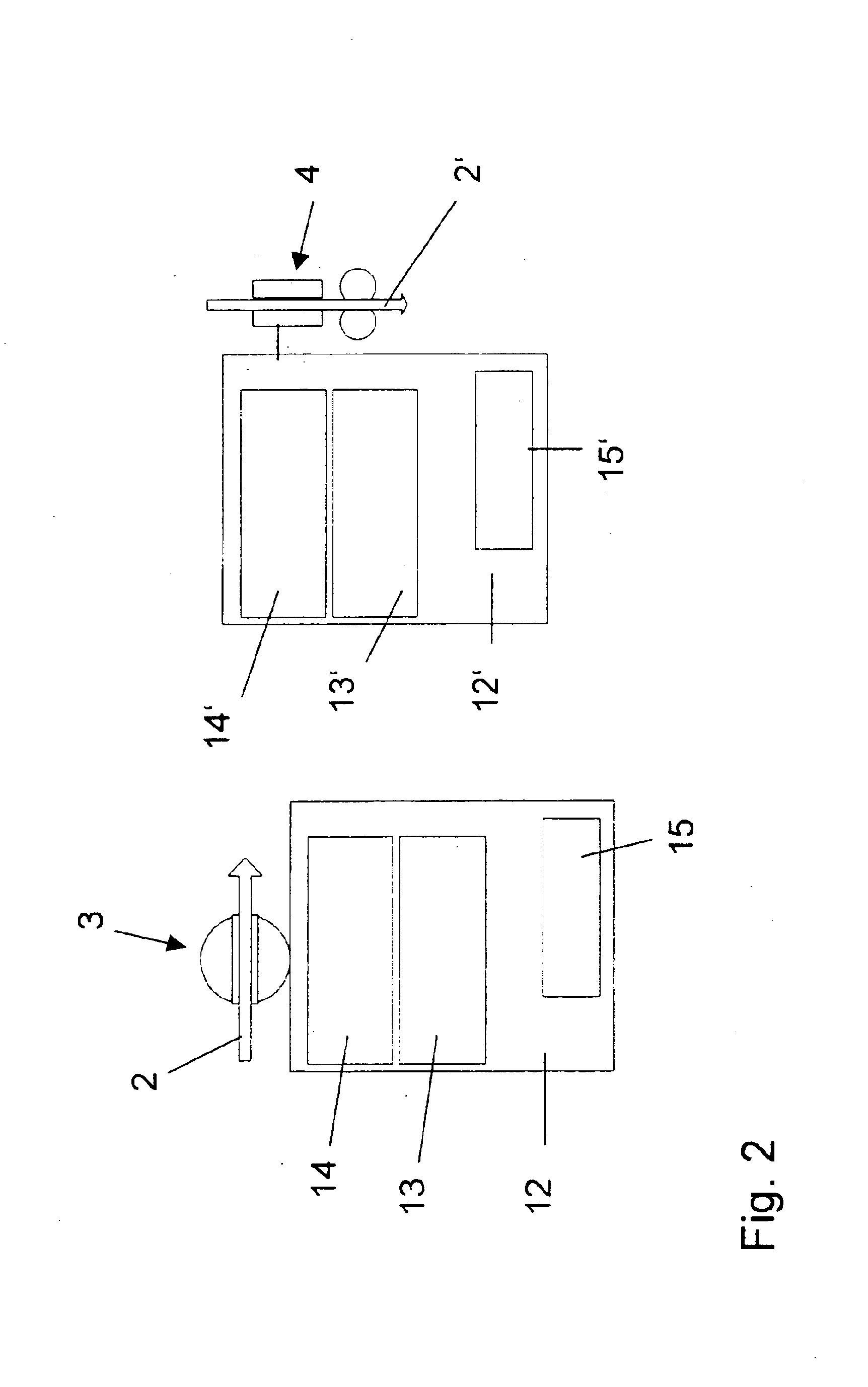Method and device to evaluate signals of a sensor to monitor a textile machine
a technology of textile machines and sensors, applied in the direction of instruments, force/torque/work measurement, apparatus for force/torque/work measurement, etc., can solve the problems of unsuitability, high delivery speed of over 1,000 meters per minute, and inconvenient us
- Summary
- Abstract
- Description
- Claims
- Application Information
AI Technical Summary
Benefits of technology
Problems solved by technology
Method used
Image
Examples
Embodiment Construction
[0039]Reference will now be made in detail to the presently preferred embodiments of the invention, one or more examples of which are shown in the figures. Each example is provided to explain the invention, and not as a limitation of the invention. In fact, features illustrated or described as part of one embodiment can be used with another embodiment to yield still a further embodiment. It is intended that the present invention cover such modifications and variations.
[0040]FIG. 1 shows a simplified block diagram of drafting equipment 1 with microwave sensors. A fiber sliver 2 runs into the drafting equipment 1 in the direction of the arrow and comes out in the form of drafted fiber sliver 2′. Normally several fiber slivers 2 are at the input of the drafting equipment 1 and are united into one fiber sliver 2′ by the drafting equipment at its outlet.
[0041]At the inlet of the drafting equipment 1, an inlet sensor 3 is installed. The inlet sensor 3 functions with microwave technology a...
PUM
| Property | Measurement | Unit |
|---|---|---|
| length | aaaaa | aaaaa |
| length | aaaaa | aaaaa |
| distance | aaaaa | aaaaa |
Abstract
Description
Claims
Application Information
 Login to View More
Login to View More - R&D
- Intellectual Property
- Life Sciences
- Materials
- Tech Scout
- Unparalleled Data Quality
- Higher Quality Content
- 60% Fewer Hallucinations
Browse by: Latest US Patents, China's latest patents, Technical Efficacy Thesaurus, Application Domain, Technology Topic, Popular Technical Reports.
© 2025 PatSnap. All rights reserved.Legal|Privacy policy|Modern Slavery Act Transparency Statement|Sitemap|About US| Contact US: help@patsnap.com



